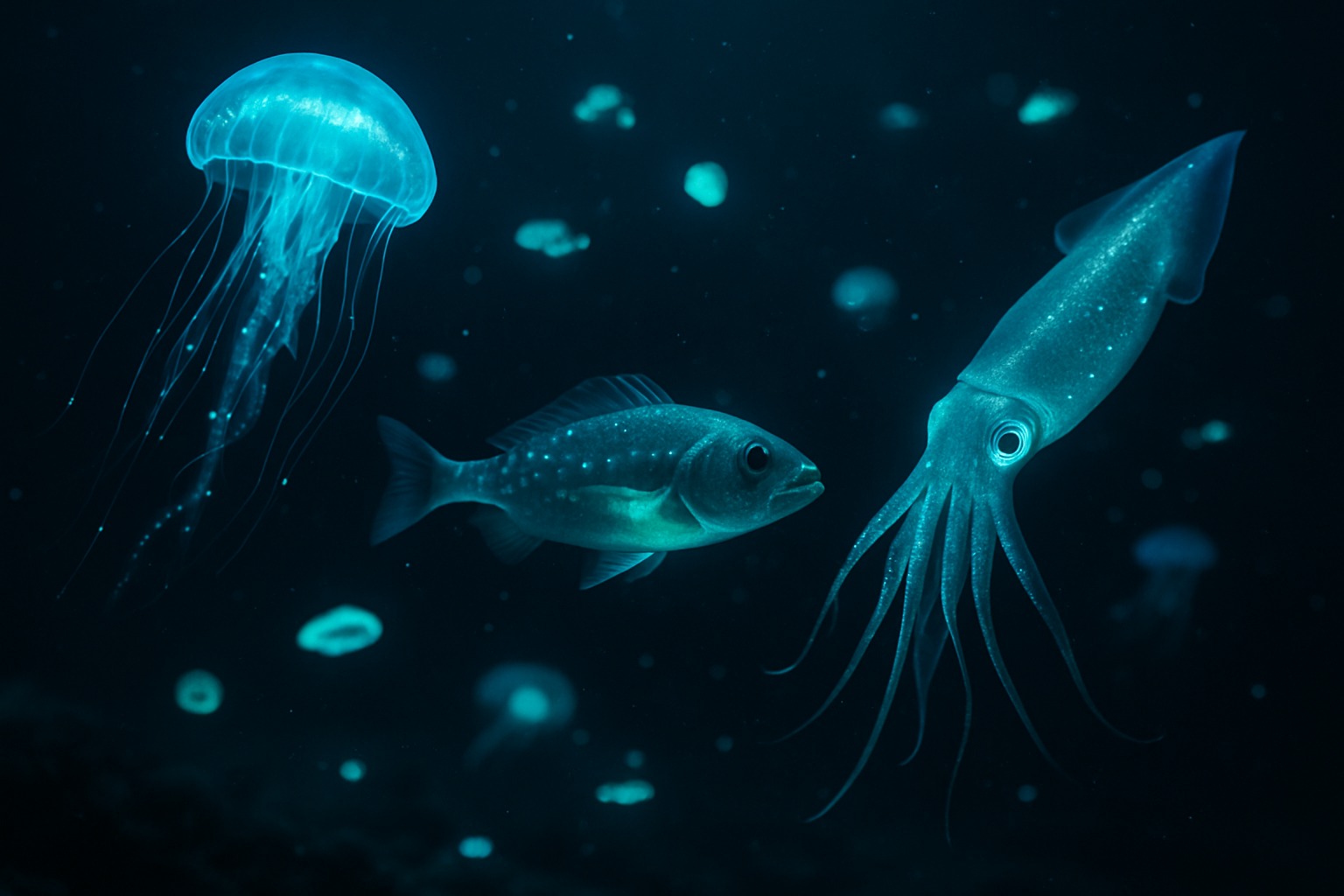The Enchanting World of Bioluminescent Marine Creatures
In the depths of our vast oceans, a mesmerizing light show unfolds nightly, captivating marine biologists and nature enthusiasts alike. Bioluminescent marine creatures, with their ability to produce and emit light, create an ethereal underwater spectacle that has fascinated humans for centuries. This article delves into the captivating realm of these glowing organisms, exploring their unique adaptations, ecological significance, and the cutting-edge research that aims to unlock their secrets.

The Science Behind the Glow
Bioluminescence is a chemical reaction that occurs within specialized light-producing organs in marine organisms. This process involves the interaction of a light-emitting molecule called luciferin with an enzyme called luciferase. When these two compounds combine in the presence of oxygen, they produce a striking blue-green light that illuminates the surrounding waters.
The ability to produce light has evolved independently in various marine species over millions of years. Scientists estimate that approximately 76% of ocean-dwelling organisms possess some form of bioluminescent capability. This widespread adaptation highlights the importance of light production in marine environments, where darkness prevails beyond the reach of sunlight.
Diverse Forms of Bioluminescent Life
The ocean hosts an incredible array of bioluminescent organisms, each with its unique adaptations and light-producing mechanisms. From microscopic dinoflagellates to large deep-sea anglerfish, these creatures showcase the diversity of life in our oceans.
One of the most well-known bioluminescent organisms is the firefly squid, found in the waters off Japan. These small cephalopods possess light-producing organs called photophores throughout their bodies, creating a dazzling display during their spawning season. Another fascinating example is the crystal jellyfish, whose green fluorescent protein (GFP) has revolutionized biological research and medical imaging techniques.
Ecological Significance and Survival Strategies
Bioluminescence serves multiple purposes in marine ecosystems, playing crucial roles in the survival and reproduction of many species. Some organisms use their light-producing abilities to attract mates, while others employ bioluminescence as a defensive mechanism against predators.
The counterillumination technique, used by many mid-water dwelling creatures, is a prime example of bioluminescent camouflage. These animals produce light on their undersides to match the faint sunlight filtering down from above, effectively rendering them invisible to predators lurking below. Conversely, some predators use bioluminescence to lure prey, such as the anglerfish with its glowing lure dangling in front of its mouth.
Bioluminescence in Shallow Waters
While often associated with the deep sea, bioluminescence also occurs in shallower coastal waters. One of the most spectacular displays of this phenomenon is bioluminescent bays, where high concentrations of dinoflagellates create a breathtaking light show when disturbed.
Puerto Rico’s Mosquito Bay, considered the brightest bioluminescent bay in the world, attracts thousands of visitors each year. The bay’s unique ecosystem and geography provide ideal conditions for the proliferation of Pyrodinium bahamense, the dinoflagellate species responsible for its famous glow. Similar bioluminescent bays can be found in Jamaica, Vietnam, and other tropical locations around the globe.
Research and Applications
The study of bioluminescent marine organisms has led to groundbreaking discoveries and innovative applications across various scientific fields. Researchers are exploring the potential use of bioluminescent proteins in medical diagnostics, environmental monitoring, and even as a sustainable light source.
One of the most significant breakthroughs in this field was the discovery and isolation of green fluorescent protein (GFP) from the crystal jellyfish. This protein has revolutionized cellular and molecular biology by allowing scientists to track specific proteins and cellular processes in living organisms. The importance of this discovery was recognized with the Nobel Prize in Chemistry in 2008.
Conservation and Future Prospects
As our understanding of bioluminescent marine life grows, so does our awareness of the threats facing these unique organisms. Climate change, ocean acidification, and pollution pose significant risks to the delicate ecosystems that support bioluminescent species.
Conservation efforts are underway to protect bioluminescent habitats, particularly in coastal areas where human activities have the most direct impact. Researchers are also working to develop sustainable methods for studying these creatures without causing harm to their populations or habitats.
The enchanting world of bioluminescent marine creatures continues to captivate scientists and nature enthusiasts alike. As we unravel the mysteries behind their ethereal glow, we gain valuable insights into the complexities of marine ecosystems and the potential applications of bioluminescence in various fields. By preserving these remarkable organisms and their habitats, we ensure that future generations can continue to marvel at the ocean’s living light show and benefit from the scientific advancements it inspires.





